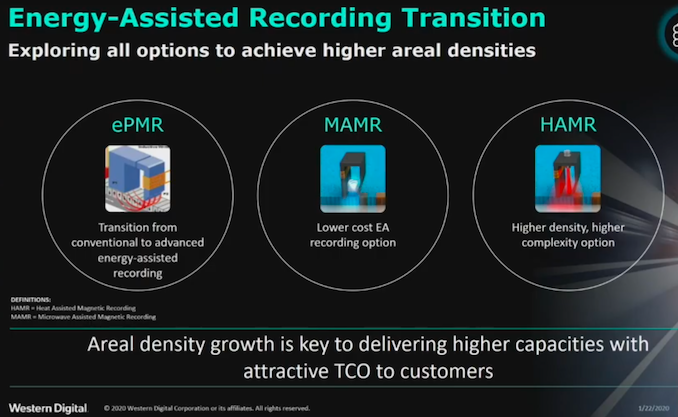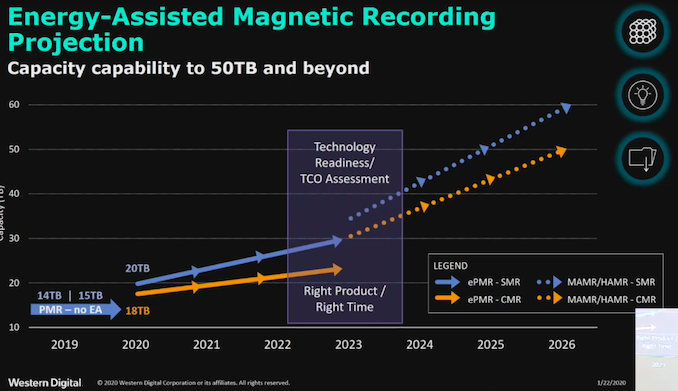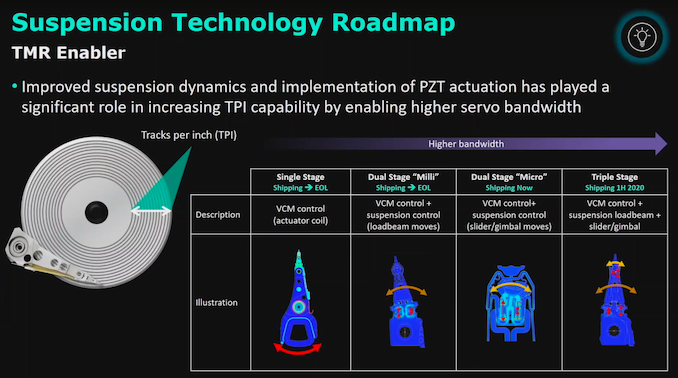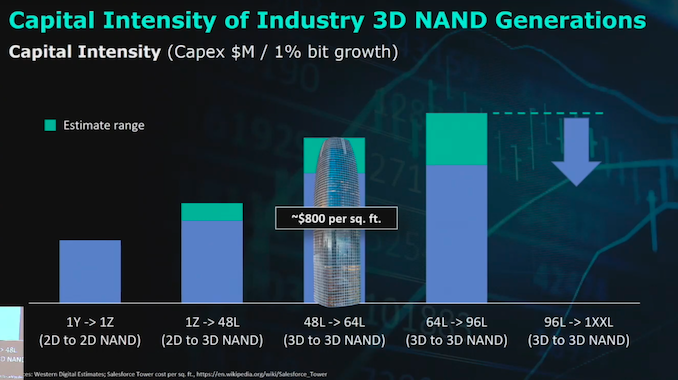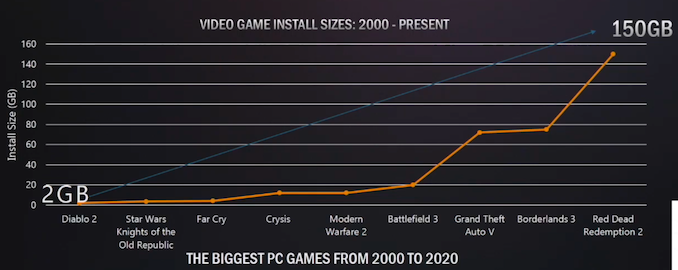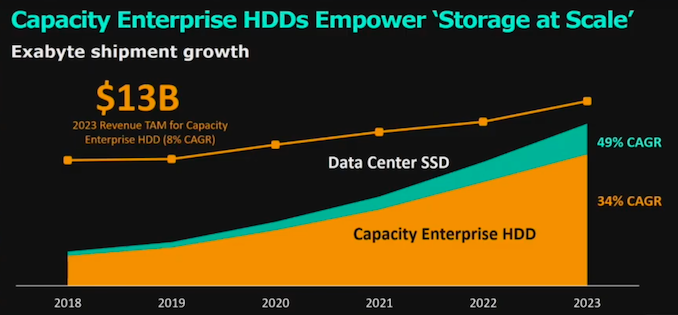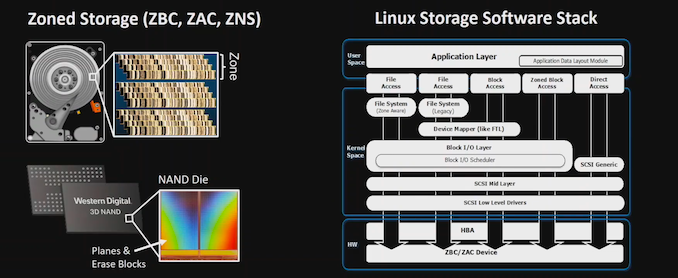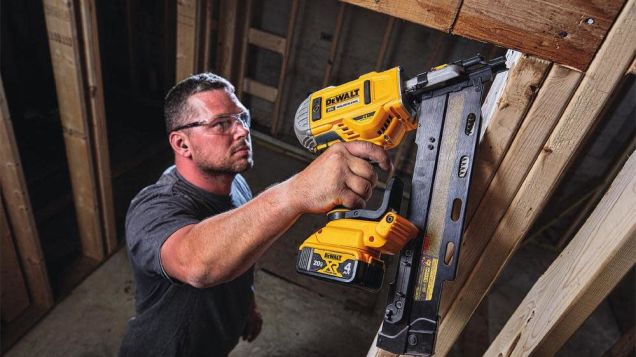You can control the Clementine media player on your Linux computer from anywhere on your local network via an official Android remote app. You only need that app and to switch a few settings to get started.
Source: LXer – How to Control Clementine Music Player From Your Phone
Monthly Archives: January 2020
Intel Should Now Have Gen7 Graphics Mitigated Without The Hefty Performance Hit
Earlier this month when Intel disclosed CVE-2019-14615 as a security vulnerability affecting their graphics architecture, older Gen7 graphics saw a huge hit to their performance with the initial patches for addressing this vulnerability on Ivy Bridge and Haswell processors. Fortunately, a new mitigation patch series was sent out this week where they believe the performance costs are now avoided…
Source: Phoronix – Intel Should Now Have Gen7 Graphics Mitigated Without The Hefty Performance Hit
McDonald’s rice burgers in Japan might be worth the trans-Pacific flight

I hope I’m not blowing your mind by telling you rice is a big deal in Japan. The crop’s been cultivated on the archipelago for thousands of years and plays a central role there economically and socially. And now, after eons, Japanese rice has taken its final form: replacing the iconic McDonald’s sesame bun. In Japan,…
Source: Kotaku – McDonald’s rice burgers in Japan might be worth the trans-Pacific flight
Levitating sand escapes classical world, enters quantum ground state
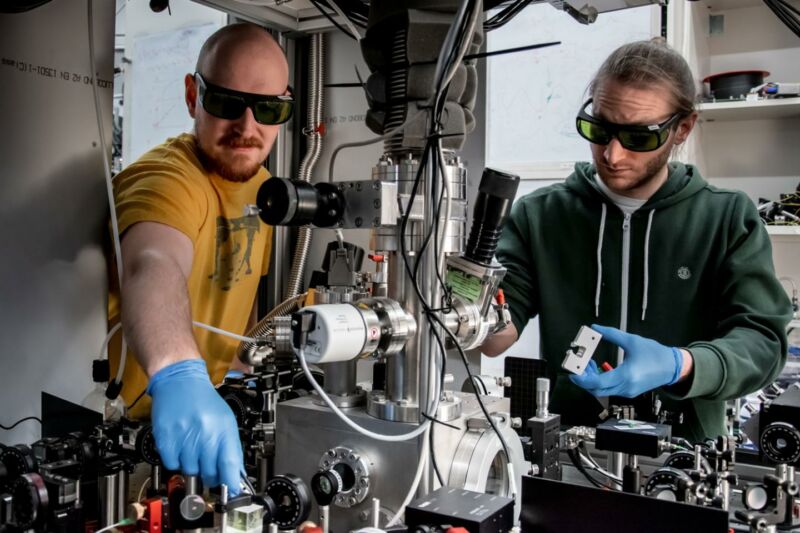
Enlarge / Two of the scientists involved in the new work wearing proper safety equipment while playing with lasers. (credit: Lorenzo Magrini, Yuriy Coroli/University of Vienna)
How big can something get and still display quantum behavior? It’s a fundamental question in physics, and it gets at the nature of reality itself. All sorts of weird behavior goes on in the quantum world: particles behave like they’re in two places at once, there are limits to how certain we can be of where things are, and so on. But once things get bigger than a handful of atoms, we get the nice, orderly behavior of our familiar world, where things exist in definite locations.
The transition between the quantum and the familiar seems to be set by environmental interactions. Once an object gets big enough, it’s constantly bumping into atoms and absorbing photons, any of which can push it out of a well-defined quantum state. So the question becomes one of how big we can let things get while still controlling their interactions with the environment.
For the last decade, the gold standard in this area has been a physical resonator linked to hardware that lets us control it with photons of a specific wavelength. To keep stray bits of energy from messing with the resonator, the whole device is kept very close to absolute zero. But now, researchers have found that they can control the interactions of a tiny bead that’s levitated on laser light. While it’s smaller than the resonators, the setup works at room temperature and doesn’t require that the bead be physically linked to any special hardware.
Read 11 remaining paragraphs | Comments
Source: Ars Technica – Levitating sand escapes classical world, enters quantum ground state
[$] Accelerating netfilter with hardware offload, part 2
As network interfaces get faster, the amount of CPU time available to
process each packet becomes correspondingly smaller. The good news is that
many tasks, including packet filtering, can be offloaded to the hardware
itself. The bad news is that the Linux kernel required quite a bit of work to be
able to take advantage of that capability. The first article in this series provided an
overview of how hardware-based packet filtering can work and the support
for this feature that already existed
in the kernel. This series now concludes with a detailed look at how
offloaded packet filtering works in the netfilter subsystem and how
administrators can make use of it.
Source: LWN.net – [$] Accelerating netfilter with hardware offload, part 2
WTT: 2080 ti FE for 2080 Super.
Nothing wrong with…
Source: [H]ardOCP – WTT: 2080 ti FE for 2080 Super.
If Trump Wants His Racist Border Wall, He'll Have to Start Taking Climate Change Seriously

Ha ha ha. Donald Trump’s impermeable wall ain’t so impermeable, after all. Not even these high walls of racist fury can withstand good ol’ Mother Nature: The Washington Post reported Thursday that the president’s beloved border wall between the U.S. and Mexico would need to leave portions wide open every summer to…
Source: Gizmodo – If Trump Wants His Racist Border Wall, He’ll Have to Start Taking Climate Change Seriously
Charges Dropped Against Pentesters Paid To Break Into Iowa Courthouse
Prosecutors have dropped criminal charges against two security professionals who were arrested and jailed last September for breaking into an Iowa courthouse as part of a contract with Iowa’s judicial arm. From a report: The dismissal, which was announced on Thursday, is a victory not only for Coalfire Labs, the security firm that employed the two penetration testers, but the security industry as a whole and the countless organizations that rely on it. Although employees Gary DeMercurio and Justin Wynn had written authorization to test the physical security of the Dallas County Courthouse in Iowa, the men spent more than 12 hours in jail on felony third-degree burglary charges. The charges were later lowered to misdemeanor trespass. The case cast a menacing cloud over an age-old practice that’s crucial to securing buildings and the computers and networks inside of them. Penetration testers are hired to hack or break into sensitive systems or premises and then disclose the vulnerabilities and techniques that made the breaches possible. Owners and operators then use the information to improve security. “I’m very glad to hear this,” said a professional pentester when I told him the charges were dropped (he prefers to use only his handle: Tink). “Clients and security firms have an obligation to protect their pentesters and consultants. Pentesters are not criminals. Pentesters help organizations protect against criminals.”
Read more of this story at Slashdot.
Source: Slashdot – Charges Dropped Against Pentesters Paid To Break Into Iowa Courthouse
Nintendo Finally Responds To Rumors Of High-Performance 'Switch Pro' Gaming Console
A few years ago, Nintendo took a gamble on a hybrid game console, one did not come close to matching the raw power of the PlayStation 4 or Xbox One, but could be played on-the-go or plopped into a dock for big screen action. I am of course talking about the Switch, which has proven to be immensely popular. This raises the question, will there
Source: Hot Hardware – Nintendo Finally Responds To Rumors Of High-Performance ‘Switch Pro’ Gaming Console
Western Digital Roadmap Updates: Energy Assisted Recording, Multi-Stage Actuators, Zoned Storage
Between CES at the beginning of the month, a series of presentations at Storage Field Day last week and a quarterly earnings report this week, we’ve heard from just about every division of Western Digital about their latest priorities, strategy and roadmaps. Here are the highlights.
Hard Drive Tech: Energy-Assisted Recording, Improved Actuators and Suspension
Western Digital’s development of hard drive technology is advancing on several fronts to push the limits of their high-capacity enterprise HDDs. Helium is old news, and used in all their drives larger than 10TB. Lately, the most attention has been focused on Heat Assisted Magnetic Recording (HAMR) and Microwave Assisted Magnetic Recording (MAMR), both of which fall under the heading of energy-assisted recording. Western Digital is still a few years away from deploying either HAMR or MAMR, but their upcoming generation of hard drives takes the first steps in that direction.
This year, WDC is starting to deliver their latest generation of high-capacity enterprise hard drives which were announced in 2019: the 16TB and 18TB Ultrastar DC HC550 and the 20TB Ultrastar DC HC640 with shingled magnetic recording (SMR). All of these new models will feature WDC’s first energy-assisted recording technology which they have dubbed ePMR. This is still a fairly ill-defined transitional feature, but it is based on some of the parts needed to implement MAMR. WDC’s roadmaps have them sticking with ePMR for a few more years before fully implementing either HAMR or MAMR technology.
The technology to position hard drive heads has also been improving. The new generation of capacity enterprise HDDs will be Western Digital’s first to use three-stage actuators for faster and more precise seeks. Very roughly, this is akin to giving the arms elbow and write joints. This is not to be confused with multi-actuator drives that allow the heads for some platters to move independently from the heads for other platters. Seagate has been making more noise about dual-actuator hard drives and their potential to significantly improve the IOPS/TB figures that have been in decline, but Western Digital is also working on multi-actuator drives—they just haven’t shared plans for bringing them to market.
3D NAND: Price And Layer Count Rising
The flash memory side of Western Digital is currently focused more on delivering incremental improvements rather than introducing major technological changes. Low flash memory prices in 2018 and 2019 caused WDC and competitors to take it slow during the 64L to 96L transition, and WDC planned to make the next generation less capital-intensive after several generations of increasing transition costs.
Demand for flash memory has now caught up with supply and is expected to significant outgrow supply later this year, in part due to the CapEx cuts across most of the industry. Western Digital doesn’t expect to significantly increase their wafer output this year, but as they transition to BiCS5 that will help increase bit output somewhat. Western Digital and Kioxia have brought online their new K1 fab in Kitakami, Iwate prefecture, Japan, joining their several fabs in Yokkaichi, Mie prefecture. However, for now the extra fab capacity simply gives them the slack necessary to transition other fabs to BiCS5 and it is not yet helping increase total wafer output.
The fifth generation of Western Digital/Kioxia BiCS 3D NAND has now officially been revealed as a 112 layer design, a modest 16% increase in layer count over the 96-layer BiCS 4. The two companies have been working to also improve density in several ways other than increasing layer count, so the memory array density of BiCS5 is more like a 20% improvement over BiCS4—still not exactly revolutionary. Western Digital and Kioxia have started limited production and sampling of BiCS5 parts, but BiCS4 is still the overwhelming majority of their NAND bit production and BiCS5 won’t start ramping up seriously until the second half of 2020.
Consumer Storage: WD_BLACK for Gamers
Western Digital’s consumer strategy seems to be mostly business as usual: nothing interesting is happening with their SATA products, and their consumer NVMe drives might not see any further updates until they move to PCIe 4.0—which WD hasn’t said much about. The main exception to the stagnation is their focus on products for gamers. WDC views gamers as a more reliable and less price-sensitive customer base than consumers as a whole. Gamers are certainly one of the largest segments of consumers that still have strong growth in their local storage needs:
Western Digital now has a broad range of gamer-oriented products under their WD Black brand, which has migrated to a new look. Their SN750 NVMe SSD and all the external drives for gamers are now styled as WD_BLACK, and share many of their visual design elements.
With three main families of external WD_BLACK drives plus the internal NVMe SSD and a few extra variants, the WD_BLACK brand is pretty broad. This has somewhat diluted the meaning of WD Black as referring only to the highest performance products in each category, but it means WD has plenty to offer both console and PC gamers. With a new generation of consoles arriving late this year, WD estimates the console storage market to be a multi-exabyte opportunity for 2020 alone.
Datacenter Storage: Almost Ready for SMR to Take Off?
SSDs are an important and lucrative part of Western Digital’s datacenter and enterprise storage lineup, but in terms of bits shipped, their high-capacity hard drives are still way ahead. Both markets are still experiencing healthy growth, and the hard drives won’t be fading into irrelevance anytime soon.
Western Digital’s hard drive R&D is focused almost exclusively on serving their enterprise and datacenter customers. The flash memory business isn’t quite so narrowly focused, but the server market is definitely where Western Digital would prefer to be selling most of their NAND.
Currently, Western Digital’s market share for enterprise SSDs is just under 10%, and their ability to expand was a bit limited during the last quarter due to supply chain issues with components other than their NAND flash. With that issue now out of the way, WDC hopes to double their market share over the next year, with a target of 20%. They have scored several new design wins recently for their enterprise NVMe drives, and one of their new customers is a major hyperscale cloud service provider. Even if they fall short of their market share target, they’ll be making a lot more money in this segment over the next year as prices rise.
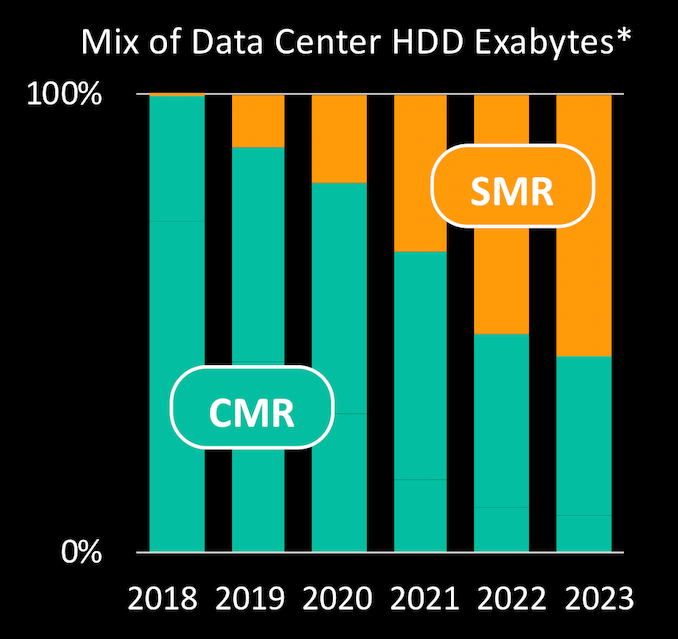
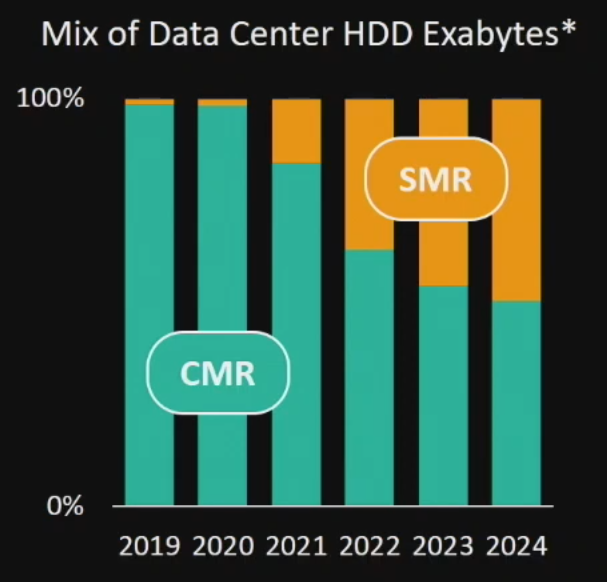
Left: April 2019 projections Right: January 2020 projections
SMR hard drives have been available for years, but have not yet seen mass adoption in the datacenter. The performance downsides of SMR are significant, and when SMR only makes the difference between 18TB and 20TB, it’s a tough sell. As recently as last spring, Western Digital was projecting that SMR hard drives would make up a non-trivial fraction of datacenter hard drive exabytes shipped starting in 2019, with growth toward ~50% market hare by around 2023. Now Western Digital’s updated projections acknowledge that SMR went basically nowhere in 2019 an will do the same for 2020, but they are adamant that it will begin to take off in 2021. Several things need to change about the current situation before that can happen.
First, SMR hard drives need to have compelling advantages. Western Digital promises that the capacity gap between CMR and SMR drives will widen in the coming years, though they stop short of promising that SMR will have a significant advantage in $/TB. Even at comparable $/TB, larger drives can provide a lower TCO for large deployments by reducing the number of servers needed to hit a certain capacity point. This is an argument Western Digital has been making to push their larger CMR drives as well:
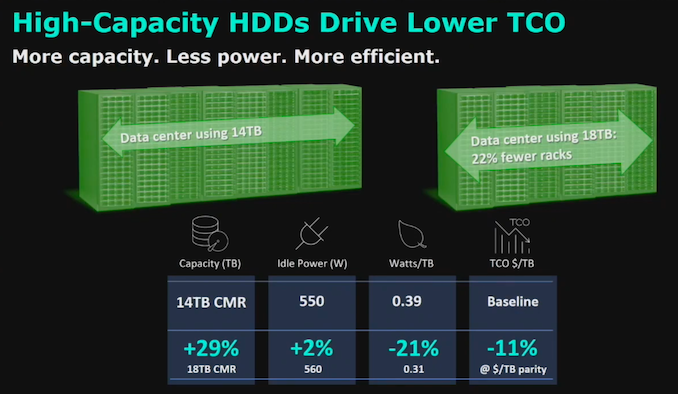
WDC’s estimates for how their 18TB HDDs can offer lower TCO than 14TB at the same $/TB
The other big change necessary for SMR to succeed is that the performance penalties need to become more manageable. SMR drives are fundamentally unable to support random writes. They need to buffer and write an entire track at a time, and tracks that overlap can only be rewritten in-order. Drive-Managed SMR HDDs let the host system pretend those restrictions don’t exist by using large write caches. Western Digital believes the best way to get good performance out of SMR drives is to instead do Host-Managed SMR where software is aware of the restrictions on writes within a shingled zone. This obviously requires major changes to the software stack, and according to WDC this is what’s been holding back adoption of SMR in the datacenter. Western Digital has been putting in a lot of work to help prepare the software ecosystem for SMR hard drives, and they believe that by 2021 they will have major customers will be ready to roll out SMR-aware software as part of a mass deployment of SMR drives.
Zoned Storage Initiative
The data access pattern restrictions imposed by SMR hard drives are eerily similar to some of the fundamental challenges of working with NAND flash memory’s small page vs huge erase block structure. For the past year, Western Digital has been promoting their Zoned Storage Initiative that seeks to address both of these challenges at once and allow applications to deal generically with zoned storage devices, be they SSDs or SMR HDDs. The ATA and SCSI command sets already have extensions for host-managed SMR. WDC has been helping NVMe develop the Zoned Namespace (ZNS) extension to provide a similar interface to SSDs.
For hard drives the benefits of SMR are small but due to get bigger. For SSDs, switching to a zoned model can allow for drastically smaller overprovisioning ratios and onboard DRAM, so drives can be cheaper while offering similar performance on many workloads. Properly host-managed IO can also significantly reduce write amplification, allowing for higher effective write endurance.
Western Digital is already shipping the Ultrastar SN340 NVMe SSD that provides some of those advantages without using the upcoming ZNS extension, by having the Flash Translation Layer work with 32kB blocks rather than 4kB. Like a drive-managed SMR HDD, this means the SN340 will allow the host to issue random write commands, but performance for those will suck. Thus, the SN340 is targeted only at the most read-intensive workloads. A ZNS SSD would more likely deal with zone sizes on the order of tens of megabytes rather than 32kB, and would require the host system to ensure its writes are sequential within each zone to avoid the horrible random write performance.
The NVMe Zoned Namespace extension is likely to be ratified this year. Western Digital’s software work in this space has been all open-source, focusing on support in the Linux kernel and developing the necessary tools and libraries for a zoned storage ecosystem.
Source: AnandTech – Western Digital Roadmap Updates: Energy Assisted Recording, Multi-Stage Actuators, Zoned Storage
Our Readers' Favorite Pet Brush Is Down to $8

FURminator Adjustable Dematting Tool | $8 | Amazon
Source: LifeHacker – Our Readers’ Favorite Pet Brush Is Down to
All the Brand-New Sci-Fi and Fantasy Books You Need to Know About for February

February may be the shortest month, even in a leap year, but we still have a jumbo-sized list of new sci-fi, fantasy, and horror books for your reading consideration. Dig in for tales of magical assassins, space shenanigans, witches and warlords, scheming royals, doomed planets (including Earth), and more.
Source: io9 – All the Brand-New Sci-Fi and Fantasy Books You Need to Know About for February
EU Officially Votes to Create a Standard Charging Adapter for Phones Despite Apple's Protests
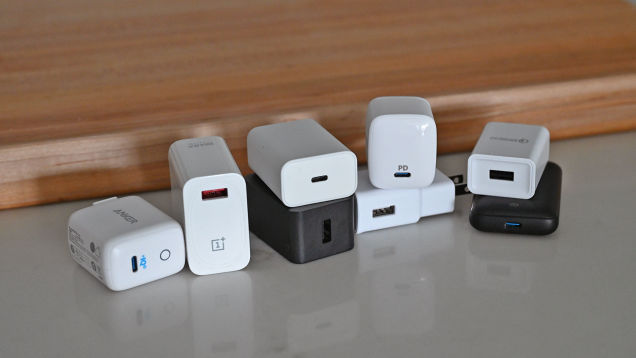
After a debate that had raged on for more than 10 years, the European Parliament has finally voted in a landslide 582-40 decision to create a standard charging solution for all phones and other small to medium-sized mobile devices.
Source: Gizmodo – EU Officially Votes to Create a Standard Charging Adapter for Phones Despite Apple’s Protests
Google open-sources the tools needed to make 2FA security keys
Security keys are designed to make logging in to devices simpler and more secure, but not everyone has access to them, or the inclination to use them. Until now. Today, Google has launched an open source project that will help hobbyists and hardware…
Source: Engadget – Google open-sources the tools needed to make 2FA security keys
Nintendo: No new Switch model planned for 2020
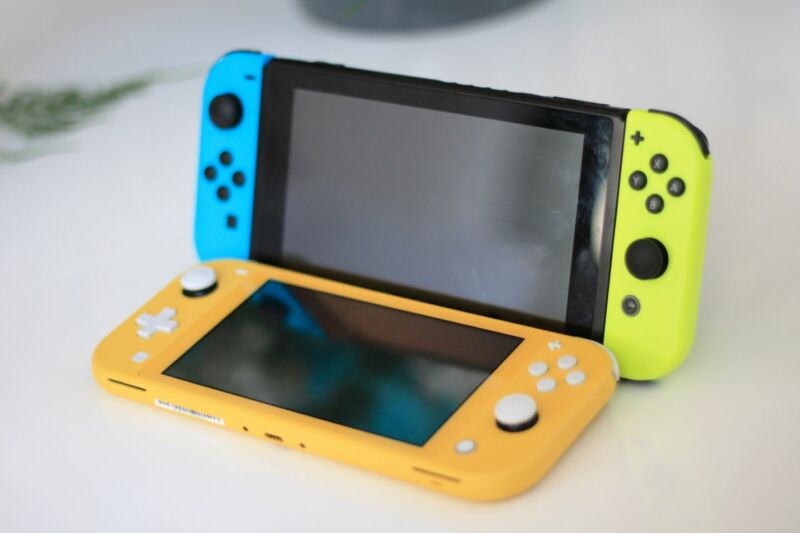
Enlarge / These are the only two Switch models that Nintendo plans to sell this year.
Nintendo says it won’t be releasing another new version of the Switch this year. “Regarding Nintendo Switch, we believe that it is important to continue to communicate the appeal of both Nintendo Switch systems and expand the installed base,” CEO Shuntaro Furukawa said in an investor briefing following an earnings report. “Please note that we have no plans to launch a new Nintendo Switch model during 2020.”
The announcement counters multiple reports from the past 12 months that suggested Nintendo was looking into a more powerful Switch model with an improved OS, image rendering, and usability functions. A Nikkei report from April suggested that this “enhanced” version of the system was still in the early planning stages, though, and didn’t even have anyone assigned to head its development at the time.
Will the Switch fall behind?
The hardware inside the Nvidia Tegra-based Switch is distinctly less powerful than the Xbox One or PS4, despite launching years later than Sony’s and Microsoft’s larger TV-based consoles. That power gap is even more pronounced for the PS4 Pro and Xbox One X and is set to widen even further later this year with the release of the PlayStation 5 and Xbox Series X.
Read 4 remaining paragraphs | Comments
Source: Ars Technica – Nintendo: No new Switch model planned for 2020
February's Fitness Challenge is: Grip!

We spend a lot of time working our arms, legs, heart, lungs—but maybe not our hands. Which is a shame, because grip strength is helpful for other exercises, and can be a goal in itself. We’re going to start with the most popular, but paradoxically least useful, hand exercise: grippers.
Source: LifeHacker – February’s Fitness Challenge is: Grip!
Delta, American, and Several Other Airlines Worldwide Suspend Flights To and From China Amid Coronavirus Fears
Delta Air Lines and American Airlines said on Friday that they will suspend all U.S.-China flights for at least several weeks due to the coronavirus outbreak. Delta on Friday said its China service suspension will begin Feb. 6 and last through April 30, but it will continue to operate the service until then to “ensure customers looking to exit China have options to do so.” From a report: Dozens of carriers including United, Cathay Pacific, British Airways and others have slashed or suspended service to China because of the outbreak. Delta was the first in the U.S. to suspend service altogether. Large companies spanning industries from technology to packaged food have suspended business trips to the country because of coronavirus, driving down demand for flights to China. Time has a more comprehensive list.
Read more of this story at Slashdot.
Source: Slashdot – Delta, American, and Several Other Airlines Worldwide Suspend Flights To and From China Amid Coronavirus Fears
Magika!: Guy Pulls Vapor Filled Bubbles From Larger Bubble
This is a short video from a kid’s birthday party or bar mitzvah some other event that warrants the presence of The Bubble Wizard of his magicalness pulling smaller vapor filled bubbles from a larger vapor filled bubble. I didn’t know this could be done and *flourishes cape* I know a lot of tricks. I’ll have to add it to my next performance. Unfortunately for him, I’ll have to catch and beat the technique out of him because a magician never reveals his secrets unless under extreme physical duress. Trust me *performing detachable thumb trick* legs got broken for this one.
Keep going for the full video. Also, I like how he looks just as amazed as anyone else.
Source: Geekologie – Magika!: Guy Pulls Vapor Filled Bubbles From Larger Bubble
Meet FuryBSD: A New Desktop BSD Distribution
itsFOSS: FuryBSD is a new BSD distribution based on FreeBSD and tweaked for desktops
Source: Linux Today – Meet FuryBSD: A New Desktop BSD Distribution


